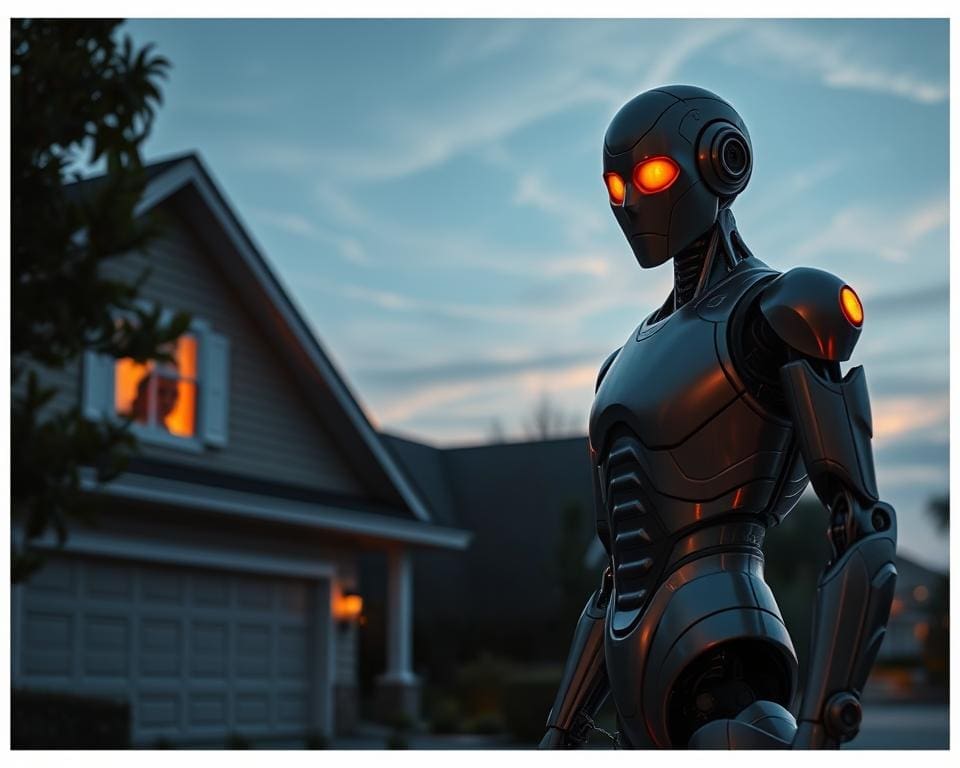As we stand on the cusp of a technological revolution, the question arises: will robots soon replace your nosy neighbour? With advancements in robots and artificial intelligence, the once-familiar dynamics of community living are poised for transformation. The dawn of future technology suggests that machines might take over traditional roles designed for watchful eyes, sparking a debate about safety and privacy in our neighbourhoods.
Historically, the role of a nosy neighbour has been a staple in the fabric of community life, often providing an unexpected safeguard against potential threats. However, as concerns for personal safety escalate, we witness a shift towards automated surveillance solutions. Brands like Boston Dynamics are at the forefront, creating intelligent machines capable of monitoring our surroundings. This evolution raises ethical questions surrounding the balance of technological advancements and the essence of human interaction within our communities.
The Rise of Robots in Daily Life
The integration of robots into daily life signifies a transformative shift in how we interact with technology. As automation continues to gain traction across various industries, the advantages become increasingly clear. Daily routines are being streamlined, leading to enhanced productivity and improved quality of life.
Understanding Automation and Its Benefits
Automation brings multiple benefits that enable individuals and businesses alike to operate more efficiently. It allows for the undertaking of repetitive tasks, freeing people to focus on innovative and creative pursuits. The introduction of robots, such as robotic vacuum cleaners, exemplifies this trend by simplifying household chores for many in the UK. This shift not only leads to cost-effectiveness but also ensures consistent quality in tasks that were once time-consuming.
The Role of AI in Modern Living
Artificial intelligence plays a pivotal role in enhancing our daily experiences. From smart speakers that facilitate hands-free operation to AI-driven personal assistants capable of managing schedules, these advancements illustrate how technology can significantly improve our lives. The incorporation of AI transforms mundane activities into seamless interactions, showcasing the profound impact of automation on our everyday routines.

Will robots soon replace your nosy neighbour?
As technology evolves, the idea of using surveillance robots in residential areas captures the imagination. Traditional neighbourhood watch schemes may soon find themselves complemented or even replaced by these innovative solutions. With the rise of artificial intelligence, these robots can monitor our surroundings with an unprecedented level of sophistication, challenging the traditional concept of a nosy neighbour.
Exploring the Concept of Surveillance Robots
Surveillance robots, equipped with various sensors and cameras, are becoming a common feature in many communities. Companies such as Ring have set the stage with smart doorbells capable of monitoring front porches and identifying unusual activity. As these technologies advance, robotic systems may soon act as vigilant neighbourhood sentinels. Their ability to gather data in real-time raises compelling questions about privacy and security, showcasing a transformative approach to neighbourhood security.
How Artificial Intelligence Enhances Neighbourhood Security
The integration of artificial intelligence into surveillance robots revolutionises how security is managed in communities. These systems can distinguish between normal and suspicious behaviour, enabling quicker responses to potential threats. For instance, they can alert homeowners or law enforcement agencies when they detect any anomalies. This not only streamlines communication but enhances overall neighbourhood security, allowing residents to feel safer in their homes. The prospect of enhanced safety through intelligent surveillance encourages consideration of how technology can effectively support community well-being.
The Societal Impact of Replacing Human Interaction
As technology permeates our daily lives, the potential for diminishing human interaction raises important questions about its societal impact. While advancements in tech bring convenience, they can also threaten the fabric of community values. The intrinsic connection between individuals remains crucial for strengthening social bonds and fostering a sense of belonging, essential for vibrant neighbourhoods.
The Importance of Human Connection
Human interaction is a fundamental aspect of life. It nurtures empathy, builds trust, and fosters resilience within communities. Relationships formed through direct contact encourage a stronger social network, vital for addressing local challenges. Engaging with neighbours not only lifts spirits but reinforces a sense of identity within a community. When technology steps in, *there is a risk of isolating individuals* from one another, undermining these vital connections.
Balancing Technology with Community Values
Integrating technology into everyday life should complement rather than replace human interaction. Communities must strive for a balance where technology enhances engagement rather than hinders it. For instance, community platforms can foster online connections that translate into real-life interactions. *This integration can strengthen community values by creating opportunities for residents to collaborate on projects, share resources, and host events. By respecting the core of human interaction, technology can serve as a bridge, supporting social cohesion while preserving the emotional depth intrinsic to community life.
Machine Learning and Its Applications in Neighbourhood Safety
Machine learning is transforming numerous sectors, with neighbourhood safety being a prominent area of impact. By harnessing advanced algorithms, communities can analyse vast amounts of data to enhance security measures, fostering a safer environment for all residents.
How Machine Learning Improves Decision-Making
The integration of machine learning in neighbourhood safety facilitates informed decision-making. Algorithms sift through historical crime data and real-time reports, identifying trends and hotspots that previously went unnoticed. These insights empower law enforcement to allocate resources more effectively and implement proactive strategies. For instance:
- Trend analysis enables police to predict potential incidents based on patterns in data.
- Real-time feedback loops provide immediate insights into ongoing operations, allowing for swift responses.
- Community-based inputs enhance the accuracy of safety measures, ensuring they meet specific local needs.
Case Studies of Successful Robot Integration
Cities adopting machine learning technologies illustrate its positive influence on neighbourhood safety. Various case studies reveal successful robot integration, showcasing how municipalities respond effectively to community concerns:
- Chicago employed predictive policing algorithms that led to a significant reduction in violent crime rates.
- London has integrated surveillance drones to monitor high-risk areas, improving real-time threat assessment.
- Los Angeles utilised machine learning to analyse social media reports and enhance community engagement in policing efforts.
Future Technology: How Robotics Will Change Our Homes
The landscape of our living environments is on the brink of a remarkable transformation, driven by future technology and advancements in robotics. These innovations promise to enhance the way we interact with our homes, introducing a new era where robots are not just tools, but essential companions in our daily lives. From performing routine household chores to offering companionship to the elderly, the potential applications for robotics are vast and exciting.
As smart home technology continues its rapid evolution, we can look forward to AI-enabled robots that could undertake a multitude of roles, including caregiving, security consultation, and even entertainment. This seamless integration of robotics into our domestic settings is likely to not only improve convenience but also contribute to a richer quality of life for all household members. Imagine a future where technology assists seamlessly, allowing families to focus on what truly matters—each other.
However, the journey towards this fascinating future will hinge on key factors, such as affordability and user-friendliness. It is crucial that the integration of these technologies aligns with our societal norms and values. As we stand on the cusp of these home innovations, the promise of robotics to profoundly change homes remains both compelling and inspiring, paving the way for a lifestyle that harmonises technology with human connection.









